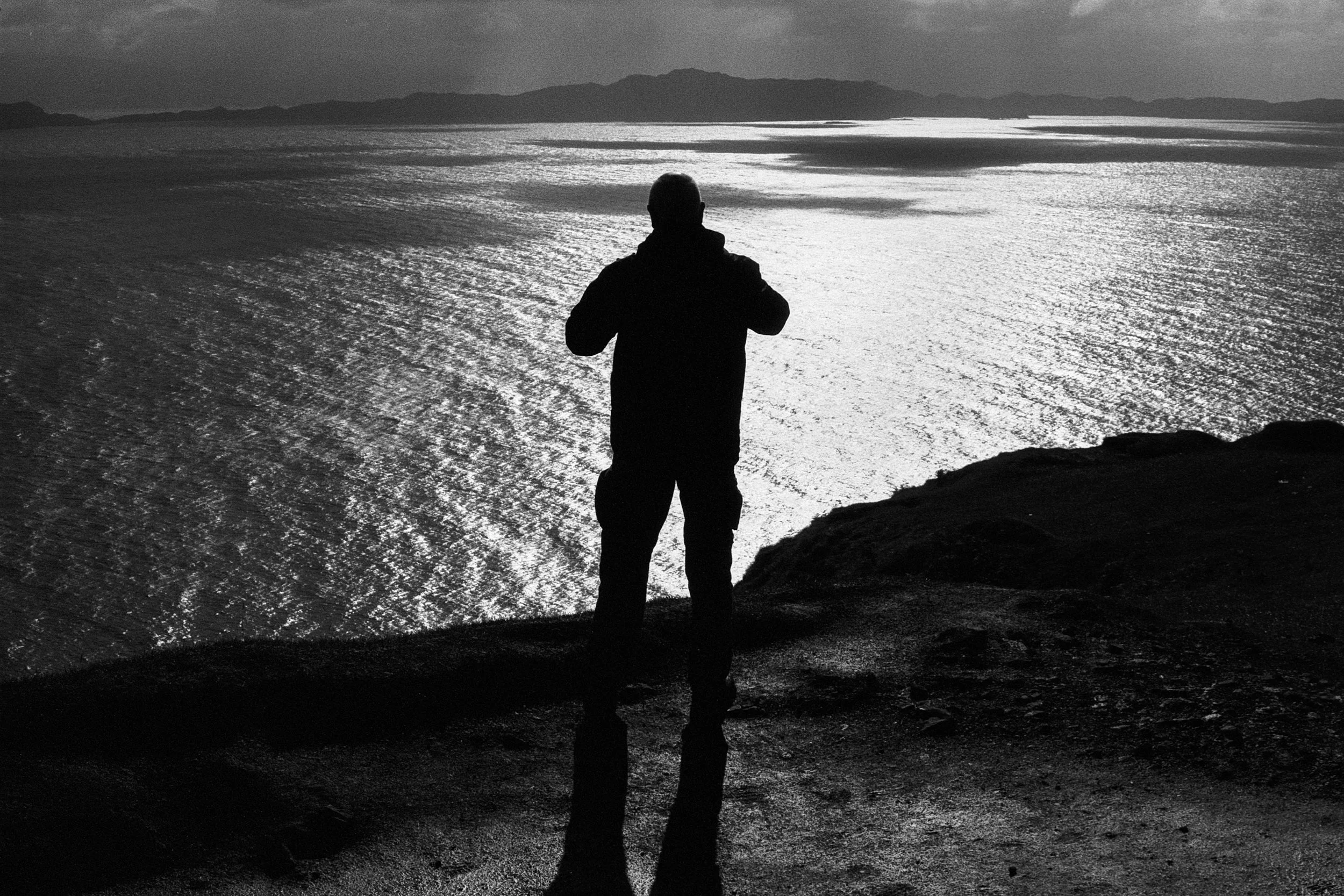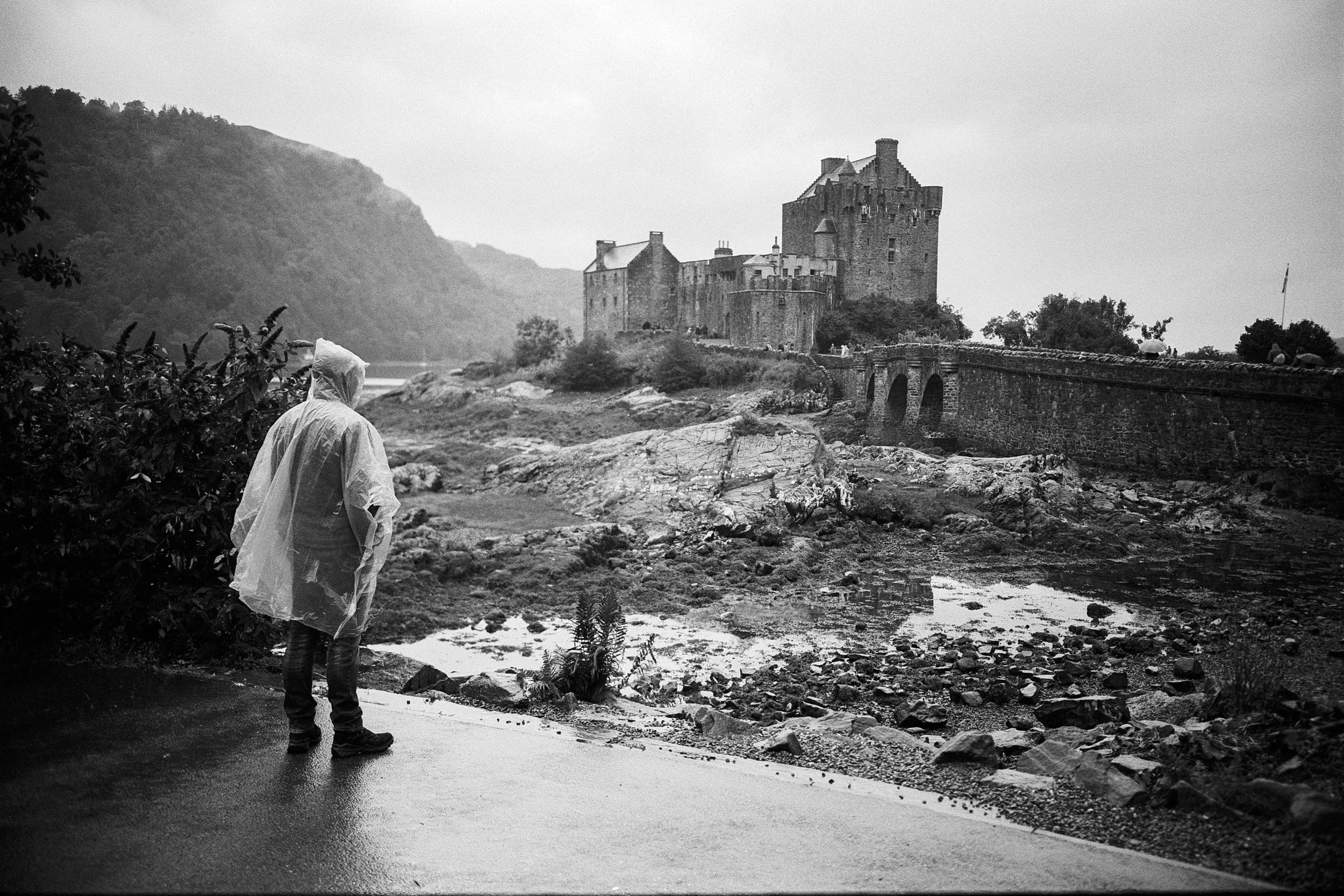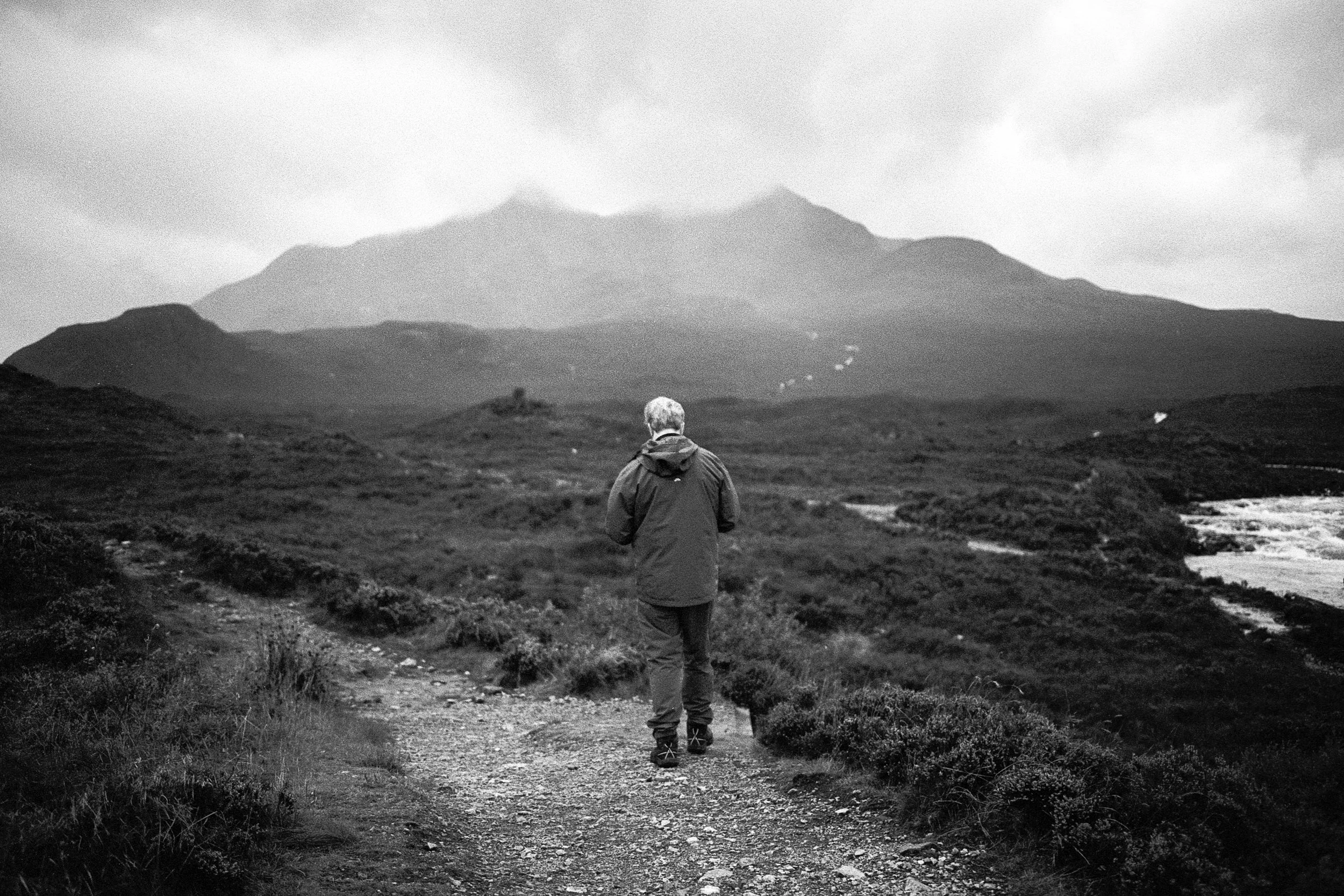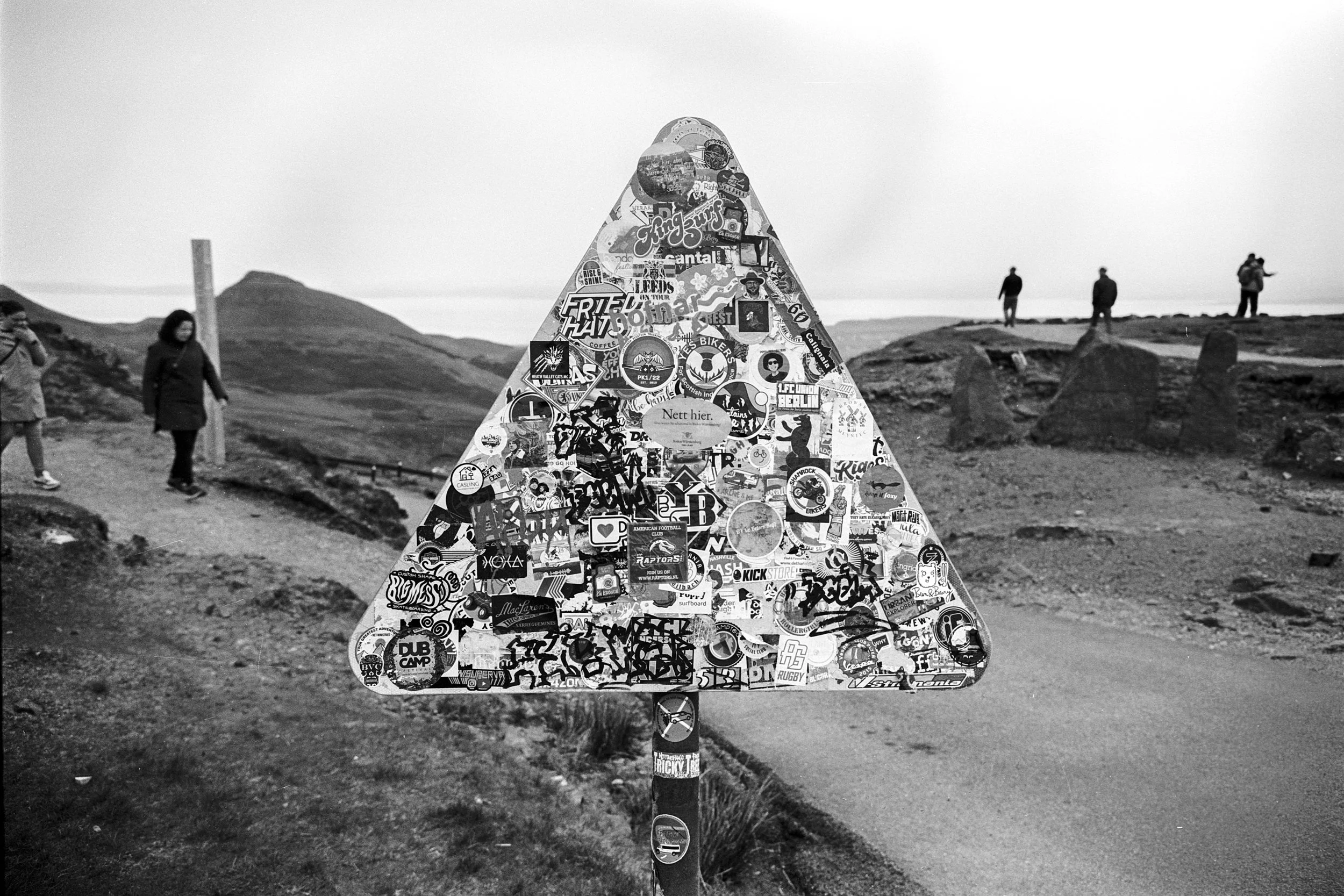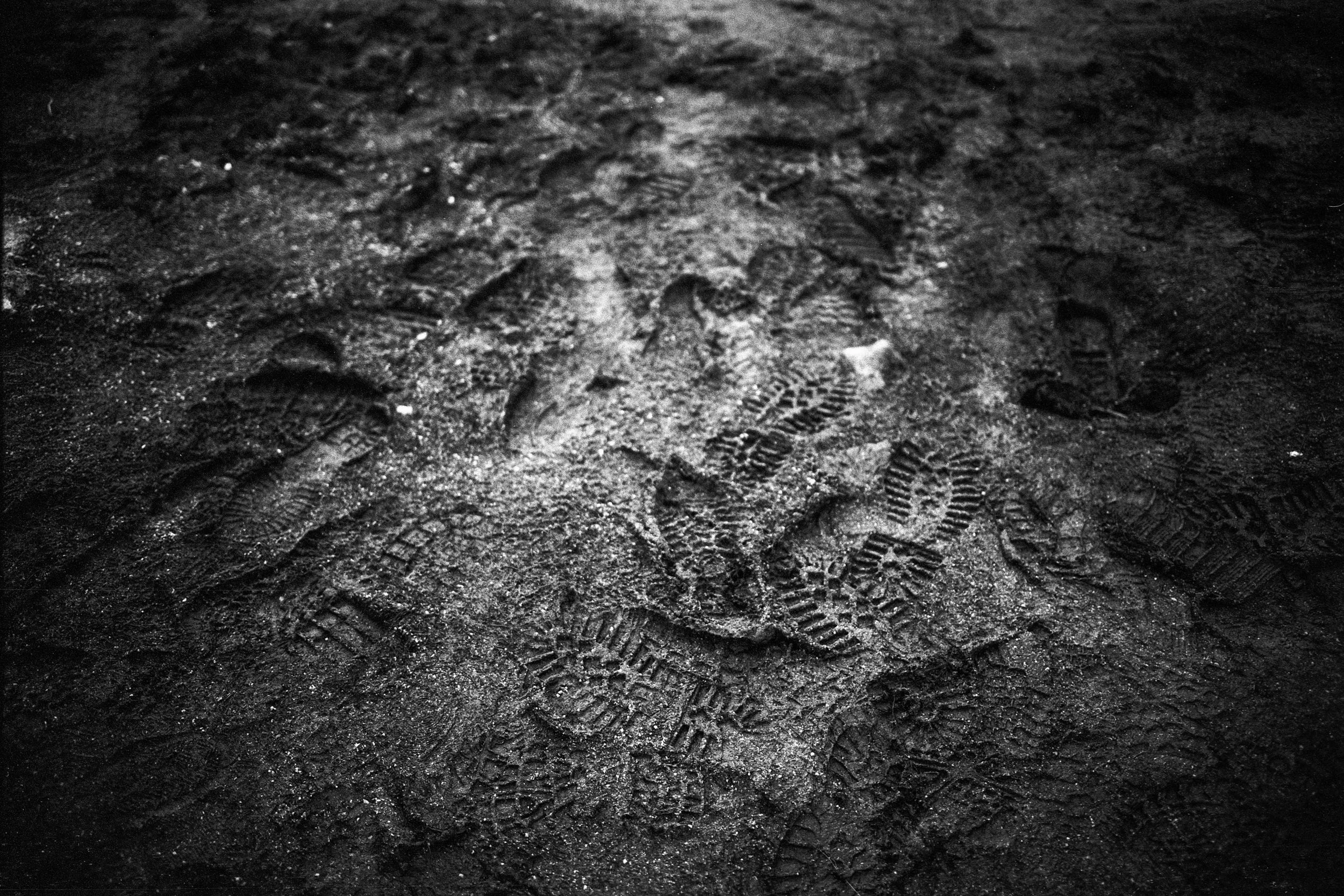Never Really Here
A photographic reflection on how we interact with the places we visit.
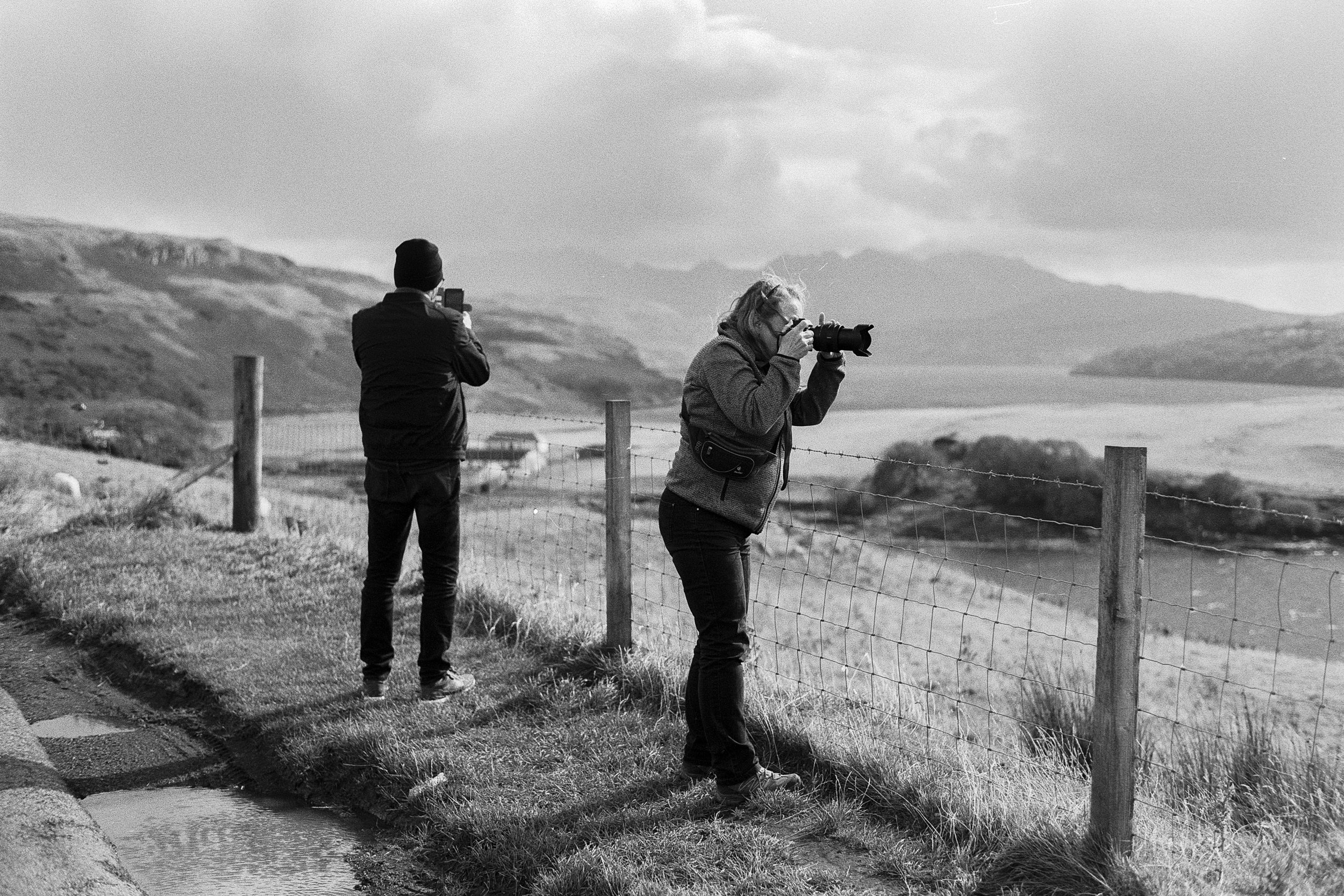

Can we ever feel like we are somewhere, or are we doomed to experience our geography through screens and applications?
I am lucky enough to explore Scotland on a regular basis, as a tour guide, and I have been witnessing a shift in travellers’ attitudes to landscapes and scenery. Once an opportunity to reflect and ponder about the smallness of our humanity, it has over the years become a chase for tokens, rectangular photographs we rush to share online in the promise of a few “likes” in return.
This series is taking a look at how algorithms and our reliance on electronic devices is shaping the way we explore and discover a destination. Returning to the same locations, sometimes on a weekly basis, I see these repeated behaviours, encouraged by algorithms, a sort of mimetism for us to search for the perfect shot, the one that will garner the most “engagement”.
However, one cannot help but wonder if travel - which used to be about surprise, sometimes solitude, often spontaneity - has perhaps been consumed by an industrial mindset that now sets most of us onto the well-trodden paths.
“A way of certifying experience, taking photographs is also a way of refusing it - by limiting experience to a search for the photogenic, by converting experience into an image, a souvenir. Travel becomes a strategy for accumulating photographs. […] This gives shape to experience: stop, take a photograph, and move on.”
— Sunsan Sontag, “On Photography” - 1971
If we are just briefly passing by, our travel undoubtedly leave a trace: the ones we are keen to imprint on the places we visit, and the ones that transform landscapes. From footprints to stickers and love locks, but also roads and car parks that induce an ever-increasing visitor demand, popular locations only become attractions, spectacles, theatre.
Tourism has become an illusory race to collect nothing more than backdrops for selfies, to buy a souvenir or attend to very engineered “experiences”. The whole territory of our travels is covered by social apps’ geotags that we cross out “bucket lists” for fear of missing out.
Screens and computer programs may therefore be taking away our human interactions with the places we visit. Lines of codes, electronic “likes”, have gotten in the way of the very reason we thrive to discover and explore.
In the real world this translates into a changed physical geography, and in our minds into an inability to stop and really be anywhere at all.


German philosopher Hartmut Rosa, in his opus “The Uncontrollability of the World” (2018), speaks of the fact that “loss of world constitutes the fundamental basic anxiety of modernity”. There is a sense that we seek more and more connections to our world, to the people around us, as we’re feeling less and less connected.
It’s almost as if our modes of travel, and our mimicking others’ travel patterns, is a way of reassuring each other, ourselves, our loved ones, that we all still belong to the same world. By frantically and relentlessly “exploring” it, we’re making sure we’re still here.
But how will we be able to resonate with our world if we seek to control in every aspect of our experiences? H. Rosa sees that modernity mutes the world, and we can suggest that our relentless pursuit of scenic backdrops only engages us with the mere surface of what’s around us, its pictures mostly, and that in a sense, when travelling, we’re never really here.

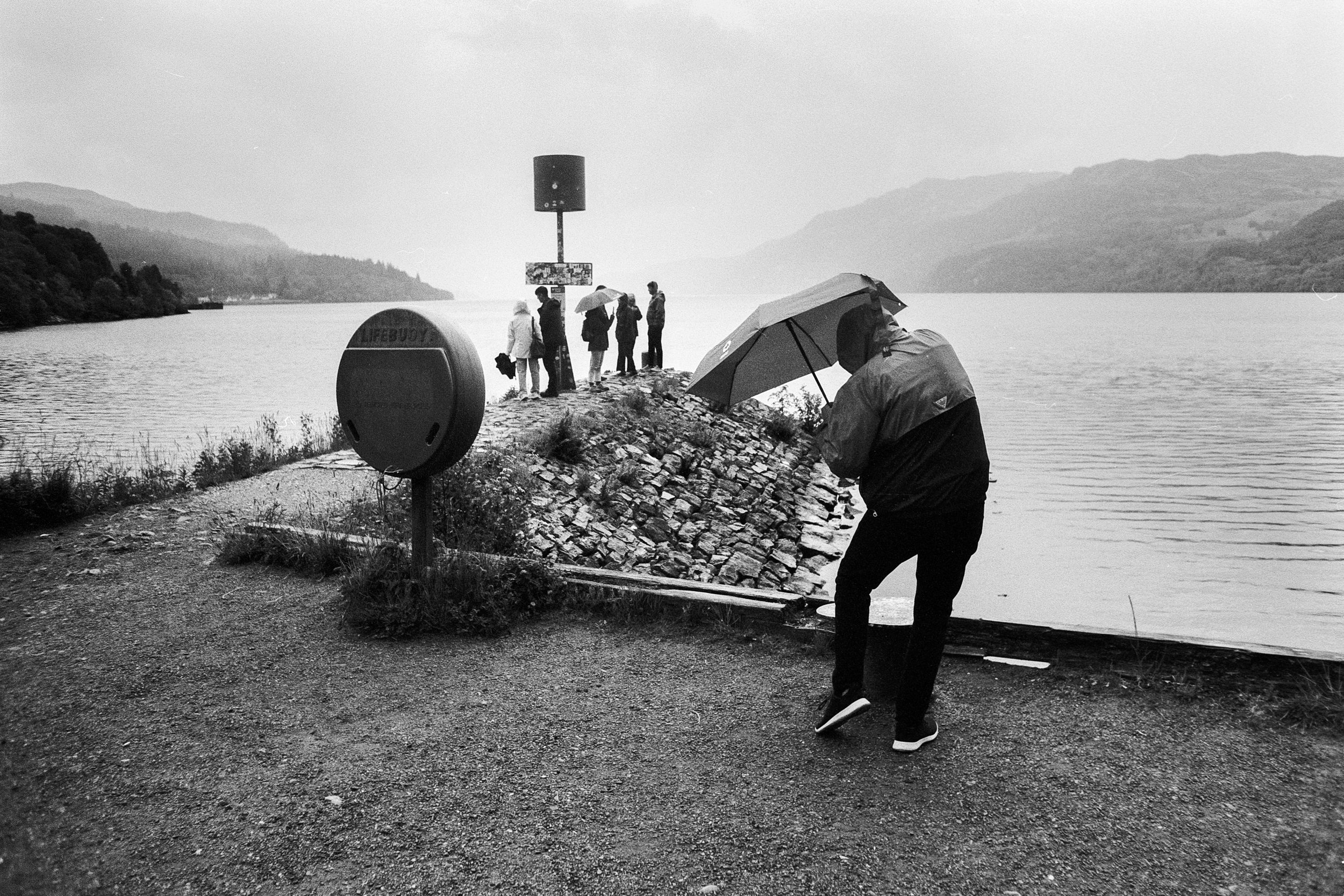
“We drove 22 miles into the country around Farmington. There were meadows and apple orchards. White fences trailed through the rolling fields. Soon the sign started appearing. THE MOST PHOTOGRAPHED BARN IN AMERICA. We counted five signs before we reached the site. There were 40 cars and a tour bus in the makeshift lot. We walked along a cowpath to the slightly elevated spot set aside for viewing and photographing. All the people had cameras; some had tripods, telephoto lenses, filter kits. A man in a booth sold postcards and slides -- pictures of the barn taken from the elevated spot. We stood near a grove of trees and watched the photographers. Murray maintained a prolonged silence, occasionally scrawling some notes in a little book.
"No one sees the barn," he said finally.
A long silence followed.
"Once you've seen the signs about the barn, it becomes impossible to see the barn."
He fell silent once more. People with cameras left the elevated site, replaced by others.
We're not here to capture an image, we're here to maintain one. Every photograph reinforces the aura. Can you feel it, Jack? An accumulation of nameless energies."
There was an extended silence. The man in the booth sold postcards and slides.
"Being here is a kind of spiritual surrender. We see only what the others see. The thousands who were here in the past, those who will come in the future. We've agreed to be part of a collective perception. It literally colors our vision. A religious experience in a way, like all tourism."
Another silence ensued.
"They are taking pictures of taking pictures," he said.”
— Don Delillo, “White Noise” - 1984

